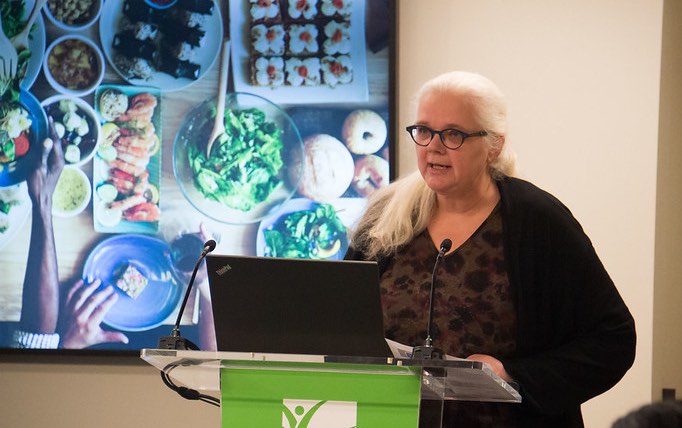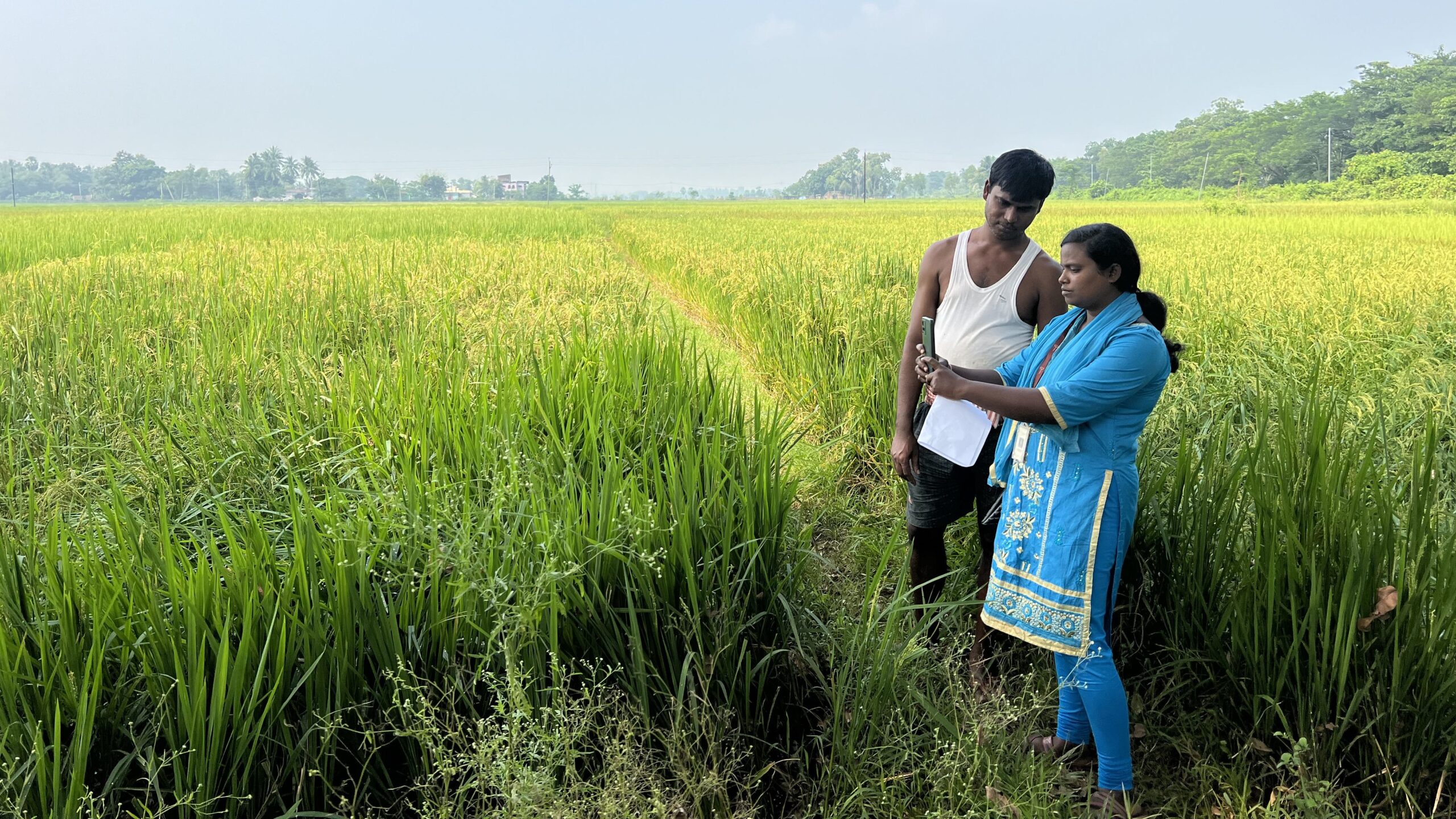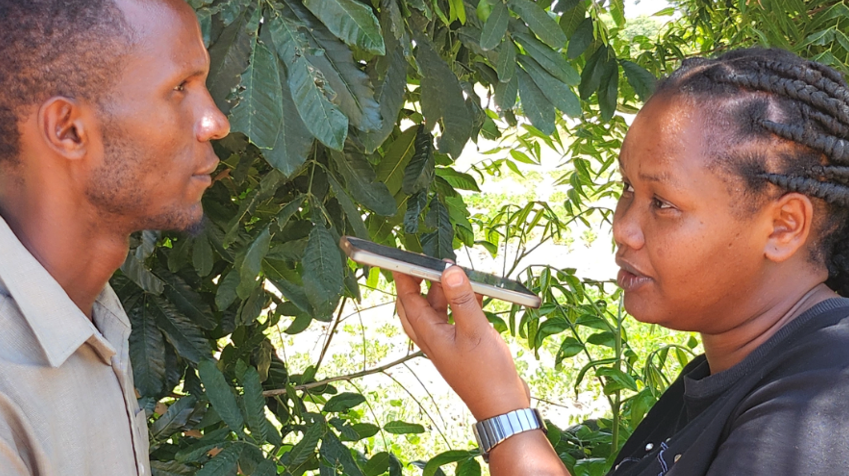Food systems in developing countries are undergoing a rapid transformation, much of it shaped by global and regional events. But actions on the country level will be critical in shaping future food system outcomes, and some countries are taking a systemic approach to assessing and acting on food system transformation—considering consumption and food environments, food supply and sustainability, health, and socioeconomic outcomes. A Nov. 14, policy seminar, co-hosted by IFPRI and the CGIAR Research Program on Agriculture for Nutrition and Health (A4NH) explored this approach.
Inge Brouwer, associate professor of Food and Nutrition Security at Wageningen University & Research and leader of A4NH’s flagship research program Food Systems for Healthier Diets, highlighted A4NH’s emphasis on considering diets in a country-specific context. She noted the importance of starting with a focus on diets from a consumer perspective to ensure dietary transitions balance health priorities with efforts to reduce intake of unhealthy foods.
Representatives from two of A4NH’s focus countries: Viet Nam and Nigeria, discussed the challenges, opportunities, and trade-offs they encounter in enabling food system actors in their countries.
Viet Nam: Policy actions around food system transformation
IFPRI Research Fellow Phuong Hong Nguyen cited several key areas of change as Viet Nam’s food system transforms. The country has long been known for its fresh food products, but is now making strides in processing and cold storage. Food production, once focused on rice, is now much more diverse and includes crops for export, such as coffee and pork.
As these changes take place, new issues arise. Food loss and waste has become a problem, Nguyen said, especially for vegetables and seafood because of a lack of cold storage facilities. Demand for post-harvest technology is increasing, particularly in the south, the source of many of exports, while areas such as the mountainous north have been slower to develop in this area.
While the government is working to manage transformations in the food system, with a national Nutrition Action Plan, food safety laws, and other steps, many issues remain, including improving infrastructure; putting plans into place to address climate change; and ensuring the transition is supported across the country, with no one left behind.
Nigeria: Opportunities and challenges for the private sector as the food system transforms
Adebowale Akande, senior scientist with the International Institute of Tropical Agriculture (IITA), an A4NH Managing Partner, highlighted the need to build connections in Nigeria’s food system, to bridge disconnects between approaches taken by producers and consumers, between cities and rural areas, and the federal and state levels.
Nigeria not only has rural, peri-urban, and urban areas that require different approaches, but also megacities. With overlapping policies at many different levels of government, what’s happening in one part of the system can easily be undone by things happening—or not happening—in other parts, Akande said.
Added to this are a host of other issues: Infrastructure problems, waste, and land degradation. A growing middle class demanding nutritious food. Increases in demand for convenient food across income levels, particularly as more women enter the workforce. How does one balance rural development and deforestation? Akande asked. How do you manage imports, and where they are coming from, when people are demanding more foreign foods?
Perspectives
“By starting with diets, we are starting with the goal of nourishing the population, not just feeding the population,” said panelist Emmy Simmons, former assistant administrator at the United States Agency for International Development (USAID) and member of A4NH’s Independent Steering Committee. Numerous risks must be taken into account when considering how to make food systems more resilient, she said, including attention to poverty and the problems low-income groups have in getting adequate diets; climate change, which will vary a great deal by geography, and where disasters will strike; and violent conflict resulting in displacement, disruption, and destruction.
“Transformation means change, radical change, and it requires us to understand a bit about change,” said IFPRI Senior Research Fellow Stuart Gillespie, leader of A4NH’s flagship program on Supporting Policies, Programs, and Enabling Action through Research (SPEAR). It is understanding more about these changes that led Gillespie and colleagues to undertake work that became first the country case study series “Stories of Change in Nutrition,” followed by “Stories of Challenge,” addressing the growing crisis of overweight and obesity.
In order to address those and other forms of malnutrition, Gillespie noted the need to focus on equity, including how it impacts setting the policy agenda, the health and food environment, and drivers of success, tradeoffs, and other factors.
“We needed to balance the evidence … on the ‘what’ questions … with a focus on the ‘how’ questions—how to make it happen,” Gillespie added.
“People talk about food system transformation, and they talk about food system transition, and I think there’s a big difference between the two,” said World Bank Director of Agriculture and Food Global Practice Martien Van Nieuwkoop. “Transformation implies radical change, and to go there, countries need to realize the hidden cost of the food system, and the scope and seriousness of it.”
He detailed the global food system’s many hidden costs, ranging from stunting and undernutrition to greenhouse gas emissions, to loss and waste—totaling approximately $6 trillion per year according to his office’s calculations. He asked attendees to consider what might be the quick wins, which might not be the things driving transformative change, but might be necessary to move forward to achieving a healthy, sustainable diet that is affordable worldwide.
Following a discussion moderated by Ruerd Ruben, research coordinator of Food Security, Value Chains, and Impact Analysis at Wageningen University & Research, A4NH Director John McDermott concluded the event.
“We are going to make mistakes, but we need to accelerate the learning,” McDermott said. “Using systematic approaches, and getting analytical about it, but also bringing the actors together, this coordination is very important. This is something that everyone is vitally interested in.”
Janet Hodur is a Communications Specialist with the IFPRI-led CGIAR Research Program on Agriculture for Nutrition and Health (A4NH). This post also appears on the A4NH website.







